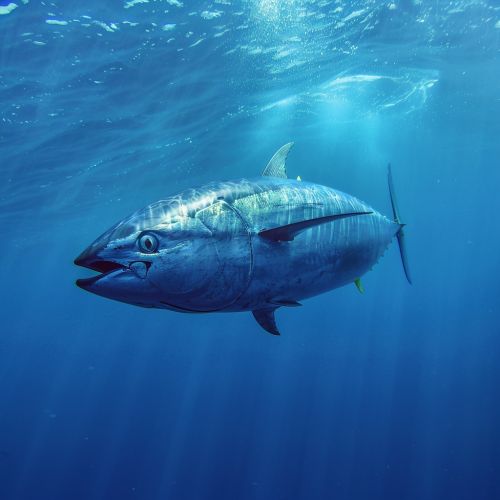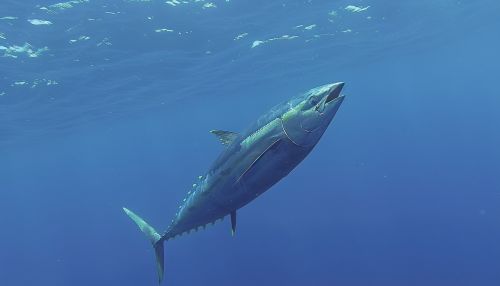Tuna
Overview
The tuna is a saltwater fish that belongs to the mackerel family (Scombridae). It is a fast-swimming pelagic fish known for its size, speed, and endurance. Tuna are found in warm seas worldwide and are highly prized as game fish for their fighting abilities.
Biology and Life Cycle
Tuna are warm-blooded, which is a rare trait among fish, and are known for their speed and high-quality flesh. They are able to regulate their body temperature, allowing them to survive in cooler waters. The life cycle of a tuna fish begins when a female lays millions of eggs, which are then fertilized by a male. The eggs float freely in the ocean until they hatch into larvae. As they grow, they transition from a diet of plankton to hunting small fish and invertebrates.


Species
There are several species of tuna, including the albacore, bigeye, bluefin, yellowfin, and skipjack. Each species has its own unique characteristics and preferred habitats. For example, the bluefin tuna is the largest species and can reach up to 10 feet in length and weigh as much as 1,500 pounds.
Commercial Importance
Tuna are commercially valuable and are sought after for their meat. They are a key species for commercial and sport fishing industries around the world. The flesh of tuna is pink to dark red, which sets it apart from most other fish. The color is due to tuna's muscle tissue's greater quantities of myoglobin, an oxygen-binding molecule.
Conservation
Tuna populations have been declining due to overfishing. Some species, like the bluefin tuna, are threatened and have been overfished almost to the point of extinction. Various international organizations are working to protect and conserve tuna populations and their habitats.
Culinary Uses
Tuna is a popular choice for cooking and is used in a variety of dishes. It is a key ingredient in sushi and sashimi, and is also commonly grilled or baked. Tuna is known for its rich, savory flavor and its meaty texture.
